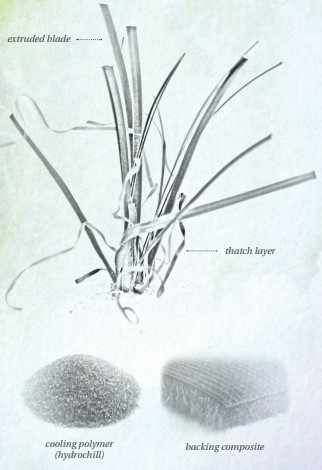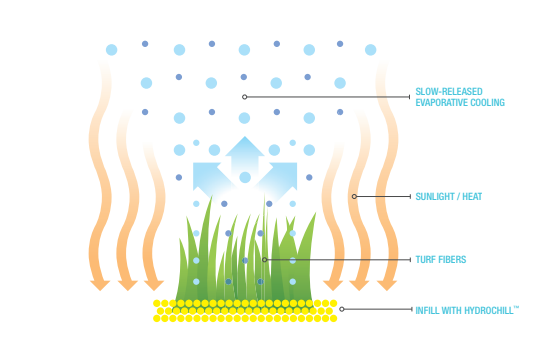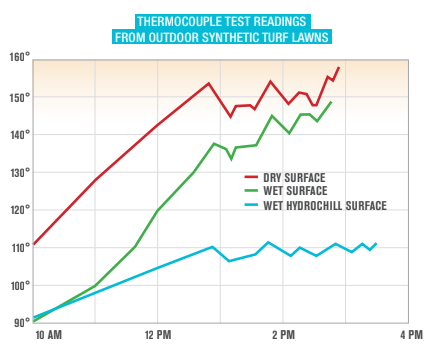It’s more than just synthetic grass.
Turf Types
Have you ever been on artificial turf?
Did you think about what manufacturing synthetic turf involves?
It’s fine if you haven’t. Most of us probably haven’t.
But, if you are curious to learn more, we have a guide for you. Turf can be made from various materials such as nylon, polyester, or combinations of both.
Check out this comparison guide to discover the pros and cons of each type of fiber.
NYLON
Pros
- While denier and yarn composition affect durability, nylon is usually stronger when compared directly.
Cons
- More susceptible to expansion and contraction.
- Exposure to direct sunlight causes fading.
POLYESTER
Pros
- Not nearly as prone to expansion and contraction.
- Polyester is less susceptible to UV than nylon.
Cons
- Not as durable than nylon per pound.
NYLON & POLYESTER
Pros
- Is water-resistant.
- Resistance to tearing.
- Resistant to saltwater corrosion and mildew.
Cons
- Both nylon and polyester are flammable. However, each responds differently to fire; nylon melts before it burns, polyester melts then burns.
It’s Not Only About Fiber
There are numerous artificial grass manufacturers out there pitching their products. But, we have a little secret to let you in on. One of the most important elements of synthetic grass is not just the source of the fiber (grass blades) is made of. The turf is a complete system that needs to be built correctly for proper performance. Here are just some of the ingredients that clearly identify a high-quality turf from a low-quality turf.
BACKING
The backing is made up of two layers and finished with a urethane coating. These components are vital as they secure the fibers (grass blades) in place, allow water to drain, and prevent abrasion from the base material.
INFILL
Infill is an important element. Infill adds time and labor but is the finishing touch that makes certain your warranty is valid and your solution performs well. Infill adds ballast, this ensures the turf is free from wrinkles and dimensionally stable. Infill provides additional protection to the yarn and backing, aides drainage, and ensures a proper footing.
YARN FIBER
The yarn fiber is composed of resins made to solve the dual challenges of durability and softness. Fibers are available in many shades and combinations that allow the eye to see numerous greens. Thatch is often added for further realism.

Keeping Things Cool with Science
One product we particularly love is HydroChill™, our patented evaporative cooling technology.
Sweating is a natural means of thermoregulation known as evaporative cooling. Evaporation of moisture from the skin’s surface yields a cooling effect. Likewise, HydroChill™ has demonstrated the ability to cool synthetic turf surfaces utilizing the same principle. As turf surfaces are heated by solar radiation, moisture present in the HydroChill™ turf is released. Evaporating moisture removes heat, providing a cooler, more comfortable playing surface.

Astandard lawn with a wet surface will cause some cooling, but temperatures can quickly rise and can become uncomfortably hot. A HydroChill™ lawn has been shown to create a large temperature differential in real-world applications. HydroChill™ has achieved 30° to 50° lower surface temperatures, based on actual lab and outdoor thermocouple testing, versus a traditional synthetic turf system.

Less Work. More Play.
Southwest Greens is not just a product but also a solution. A solution that utilizes much less water each year, substantially reduces the impact on mother nature, and requires much less maintenance. All of which gives you the option of less work, more play.
